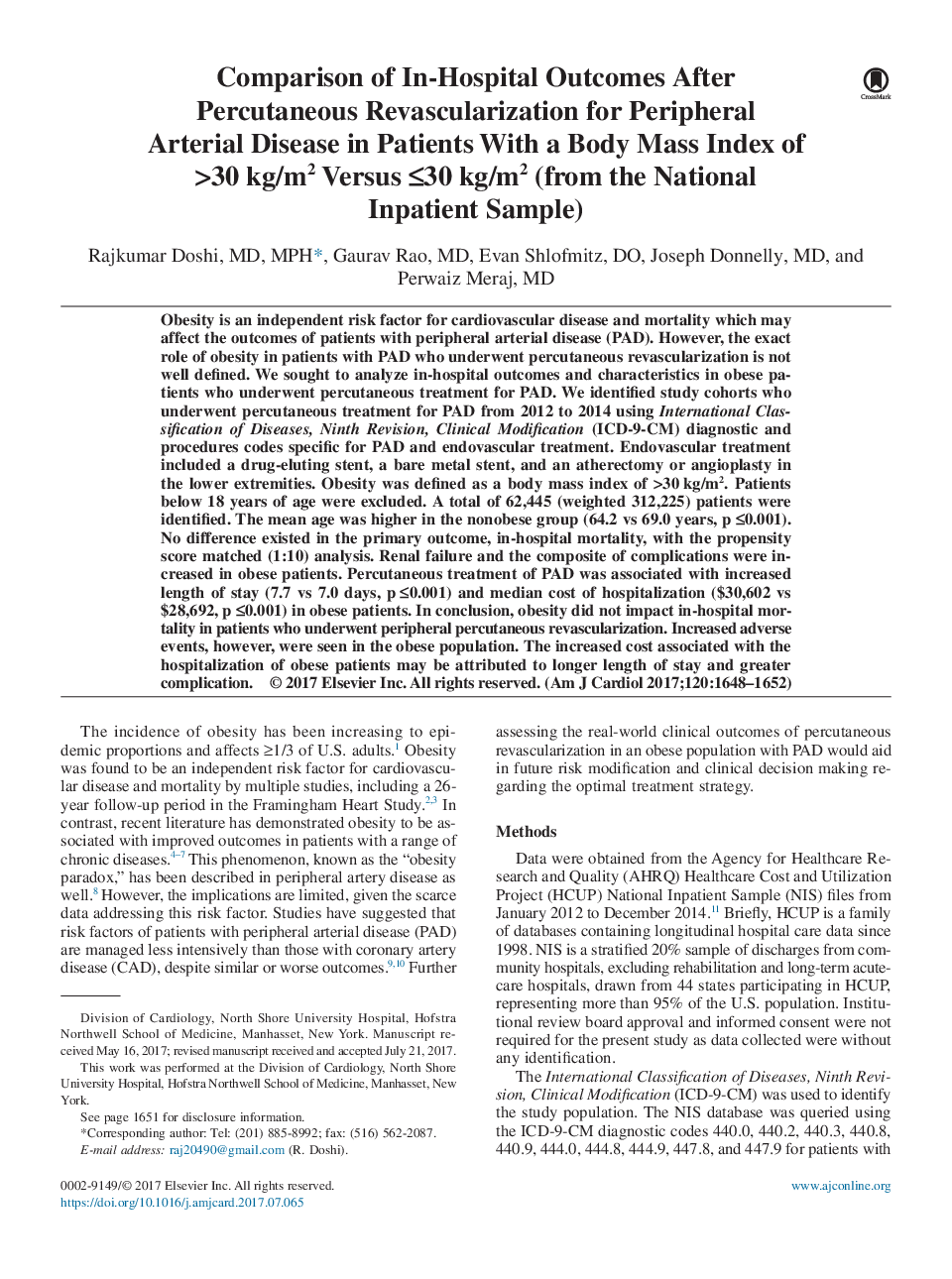| کد مقاله | کد نشریه | سال انتشار | مقاله انگلیسی | نسخه تمام متن |
|---|---|---|---|---|
| 8651704 | 1572074 | 2017 | 5 صفحه PDF | دانلود رایگان |
عنوان انگلیسی مقاله ISI
Comparison of In-Hospital Outcomes After Percutaneous Revascularization for Peripheral Arterial Disease in Patients With a Body Mass Index of >30âkg/m2 Versus â¤30âkg/m2 (from the National Inpatient Sample)
دانلود مقاله + سفارش ترجمه
دانلود مقاله ISI انگلیسی
رایگان برای ایرانیان
موضوعات مرتبط
علوم پزشکی و سلامت
پزشکی و دندانپزشکی
کاردیولوژی و پزشکی قلب و عروق
پیش نمایش صفحه اول مقاله

چکیده انگلیسی
Obesity is an independent risk factor for cardiovascular disease and mortality which may affect the outcomes of patients with peripheral arterial disease (PAD). However, the exact role of obesity in patients with PAD who underwent percutaneous revascularization is not well defined. We sought to analyze in-hospital outcomes and characteristics in obese patients who underwent percutaneous treatment for PAD. We identified study cohorts who underwent percutaneous treatment for PAD from 2012 to 2014 using International Classification of Diseases, Ninth Revision, Clinical Modification (ICD-9-CM) diagnostic and procedures codes specific for PAD and endovascular treatment. Endovascular treatment included a drug-eluting stent, a bare metal stent, and an atherectomy or angioplasty in the lower extremities. Obesity was defined as a body mass index of >30âkg/m2. Patients below 18 years of age were excluded. A total of 62,445 (weighted 312,225) patients were identified. The mean age was higher in the nonobese group (64.2 vs 69.0 years, pââ¤0.001). No difference existed in the primary outcome, in-hospital mortality, with the propensity score matched (1:10) analysis. Renal failure and the composite of complications were increased in obese patients. Percutaneous treatment of PAD was associated with increased length of stay (7.7 vs 7.0 days, pââ¤0.001) and median cost of hospitalization ($30,602 vs $28,692, pââ¤0.001) in obese patients. In conclusion, obesity did not impact in-hospital mortality in patients who underwent peripheral percutaneous revascularization. Increased adverse events, however, were seen in the obese population. The increased cost associated with the hospitalization of obese patients may be attributed to longer length of stay and greater complication.
ناشر
Database: Elsevier - ScienceDirect (ساینس دایرکت)
Journal: The American Journal of Cardiology - Volume 120, Issue 9, 1 November 2017, Pages 1648-1652
Journal: The American Journal of Cardiology - Volume 120, Issue 9, 1 November 2017, Pages 1648-1652
نویسندگان
Rajkumar MD, MPH, Gaurav MD, Evan DO, Joseph MD, Perwaiz MD,